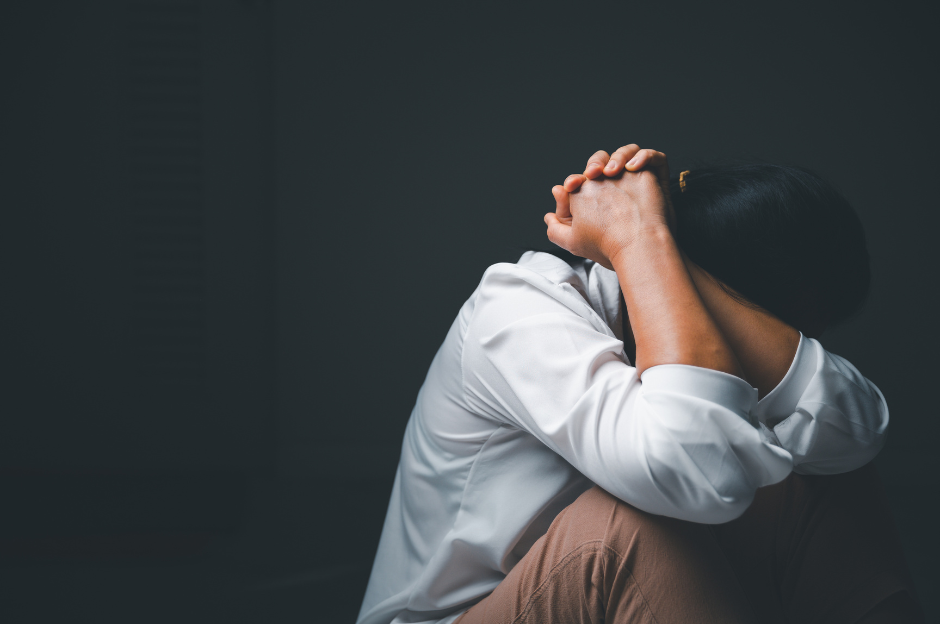Anxiety isn’t inherently harmful. It’s a normal, short-term response to stress and effectively helps us respond to immediate danger. It heightens our awareness and releases hormones that prepare our bodies to fight or flee. However, anxiety becomes problematic when it’s continuous, causing constant worry and fear. This is called an anxiety disorder, the most common category of mental health disorders.
Anxiety disorders negatively impact a person’s ability to function, causing significant disruption to daily life. There are many types of anxiety disorders, including generalized anxiety disorder, panic disorder, agoraphobia, selective mutism, social anxiety disorder, and specific phobias. Today, we’ll learn about the latter with a brief overview of 17 phobias.
What’s a Specific Phobia?
People with phobias experience extreme fear in response to their triggers. This reaction is disproportionate to the threat of the item or situation. While everyone is reasonably afraid of something, phobias can cause significant disruptions to a person’s life. They may struggle to complete necessary tasks or participate in daily life.
Common reactions to phobias include:
- Feeling panic or a sense of immediate danger
- Feeling disconnected from one’s body or the world
- Feeling the need to escape
- Sweating or chills
- Stomach upset
- Shaking
- Trouble breathing
- Rapid heartbeat
- Dizziness and fainting
Common Phobias
- Arachnophobia: Fear of spiders – People with arachnophobia have an intense fear of spiders. They may avoid outdoor activities or feel extremely distressed if they know there’s a spider in their home.
- Ophidiophobia: Fear of snakes – People with a snake phobia may feel repulsed by the idea or sight of snakes and avoid areas where they may encounter them.
- Acrophobia: Fear of heights – For some people with acrophobia, any change in height (like being on a ladder) triggers fear. While for others, only extreme heights are a concern.
- Claustrophobia: Fear of enclosed spaces – This phobia can make situations like crowded elevators or small rooms scary and suffocating.
- Aerophobia aka Pteromerhanophobia: Fear of flying on airplanes – A common phobia that may cause people to have panic attacks or extreme anxiety when flying.
- Agoraphobia: Fear of open or crowded spaces – People who struggle with agoraphobia often fear being trapped in public places they can’t escape or where they may feel embarrassed. They may avoid crowded places or, in severe cases, refuse to leave home.
- Astraphobia: Fear of thunder and lightning – This phobia is common in children, but anyone can struggle with it. During storms, people may hide in closets, under beds, in basements, etc. They may also be obsessed with staying updated on the weather.
- Mysophobia: Fear of germs or dirt – Those with mysophobia may wash their hands excessively, avoid public places, and not touch people to minimize exposure to germs.
- Glossophobia: Fear of public speaking – Glossophobia is a common social phobia. People with it may fear judgment or embarrassment when speaking in public and may experience a strong urge to escape public speaking situations.
- Hemophobia: Fear of blood – This phobia causes a disproportionate fear response in situations where blood is involved, real or fictional. For people with hemophobia, the sight or thought of blood causes a drop in heart rate or blood pressure (called a vasovagal response), which may cause fainting.
- Cynophobia: Fear of dogs – Past traumatic experiences or cultural beliefs may contribute to an extreme fear of dogs. Cynophobia can lead to avoidance of areas where dogs may live, not visiting friends with dogs, etc.
- Ailurophobia: Fear of cats – This phobia is similar to the above but centers around cats.
- Nyctophobia: Fear of darkness or night – People with this phobia may fear the perceived threats of nighttime or darkness, dangers lurking in it, or what could happen.
- Dentophobia: Fear of dentists – Negative past experiences or fear of pain may contribute to this phobia, leading to avoidance of dental care.
- Aquaphobia: Fear of water – Pools, bathtubs, and natural bodies of water may trigger anxiety for people with aquaphobia. They might avoid drinking water, showering, being splashed and other water-related activities. Thalassophobia is a related fear of deep bodies of water, like lakes and oceans.
- Trypanophobia: Fear of injections or needles – The sight of needles or anticipation of pain during medical procedures can trigger intense anxiety, which may lead to avoidance of necessary vaccinations and medical care.
- Emetophobia: Fear of throwing up or seeing others do it – People with this phobia may fear uncontrollable vomiting, choking on vomit, the embarrassment of throwing up in front of people, etc.
Treatment
- Psychotherapy to explore the root cause of the phobia and create healthy coping skills.
- Exposure therapy, in which people are slowly exposed to their phobia. Therapists help guide the process, during which they help the patient modify their thinking and behavior.
- Medications like anti-depressants and anti-anxiety prescriptions.
Want to speak to a qualified counselor about coping with phobias? Try the UCA 24-Hour Counseling Hotline.
Sources
https://www.verywellmind.com/what-is-the-fight-or-flight-response-2795194
https://www.psychiatry.org/patients-families/anxiety-disorders/what-are-anxiety-disorders
https://my.clevelandclinic.org/health/diseases/24757-phobias
https://www.verywellmind.com/spider-fears-or-arachnophobia-2671679
https://adaa.org/understanding-anxiety/specific-phobias/fear-of-vomiting
https://my.clevelandclinic.org/health/diseases/22958-aquaphobia-fear-of-water
https://www.healthline.com/health/hemophobia#risk-factors
https://www.healthline.com/health/glossophobia#causes
https://www.mayoclinic.org/diseases-conditions/agoraphobia/symptoms-causes/syc-20355987#:~:text=Agoraphobia%20(ag%2Duh%2Druh,an%20actual%20or%20upcoming%20situation.

